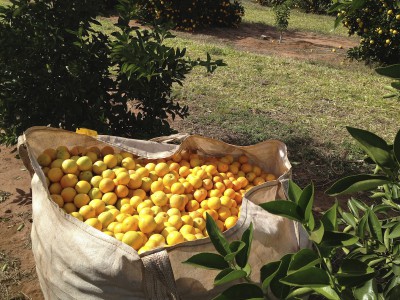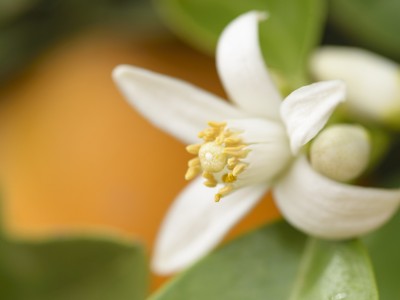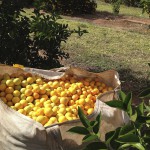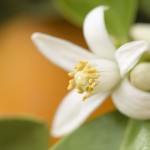Product: Orange Oil CP
Orange Oil CP Brazil Citrus sinensis
-
Description
Orange oil is extracted by simple pressure from the outer coloured part of the Citrus sinensis' peel. Oranges are widely cultivated in tropical and subtropical climates for the sweet fruit and commercially for essential oil extraction.
Orange oil is a by-product of the juice industry. Oil is cold pressed from the peel of the fruit, after juice extraction and is widely used across the flavour and fragrance industry. Sweet orange (citrus sinensis) is around 90% d’limonene, a product used across many more industries. Approximately 40% of global oranges are processed for juice and oil with 60% solely used as a fresh fruit for consumption.
Brazil has the largest production of fresh oranges and also it processes more orange than any other country making it the largest producer of orange oil and d’limonene (orange terpenes) in the world. Harvesting can be almost 12 months of the year due to the widespread distribution of plantations, however it is unusual for any significant production during February – April. Therefore we usually consider May - December as a typical harvesting period.
Brazilian oranges make up for around 34% of the world market – approximately 17 million tons+/- from a global estimate of 50 million tons +/- of fresh fruit. The Brazilian state of São Paulo contributes around 80% of the country’s production figures.
It's been a challenging time of late for the world's largest producing country and they're forecasting a sharp reduction of 18.3% in the total 2016/17 crop. To read more about today's conditions click here.
You may have recently read in our Market reports details of the challenges faced by the industry due to Citrus Greening. Click here for more details of the global impact of this wide spreading disease.

-
Product Details
- Botanical name: Citrus sinensis
- Origin: Brazil
- Crop Season: July - December
- Plant/part used: Peel
- Method of extraction: Cold pressed
- TSCA CAS: 8008-57-9
- EINECS CAS: 8028-48-6
- EINECS: 232-433-8
- INCI Name: Citrus aurantium dulcis (Orange) oil
- Appearance: Yellow orange to deep orange mobile liquid
- Organoleptic Properties: Orange fresh juicy sweet
- Density: 0.840 - 0.848
- Refractive index: 1.470 - 1.476
- Optical rotation: +94º to +100º
- Chemical constituents: Limonene, Myrcene, Pinene, Linalool
- Fragrance usage: max. 10%
- Flavour usage: max. 4200ppm
- IFRA: Restricted by IFRA
- Allergens: Contains fragrance allergens
- REACH: Registered
-
Latest Market Information September 11, 2025
Looking ahead, the 2025–26 harvest is expected to rebound by 36%, driven by favorable climate conditions, improved orchard management, and more productive trees. In the orange oil market, Brazil continues to dominate global production, supplying multiple industries with versatile natural ingredients. Prices have begun to ease slightly, particularly for terpenes, though they remain high overall. At the same time, uncertainty surrounds the potential impact of the newly imposed 50% tariff on Brazilian goods on both the U.S. and wider global markets. While supply challenges linked to disease and climate persist, demand for eco-friendly, natural components ensures that Brazil’s orange oil segment remains firmly on a growth trajectory within the essential oils market.
Market prices : USD 15.00 /kilo -
Product Enquiry
To ask us a fair quote for this product, please fill the following form:
-
Documents & Links
 Ultra International B.V.
Ultra International B.V.



